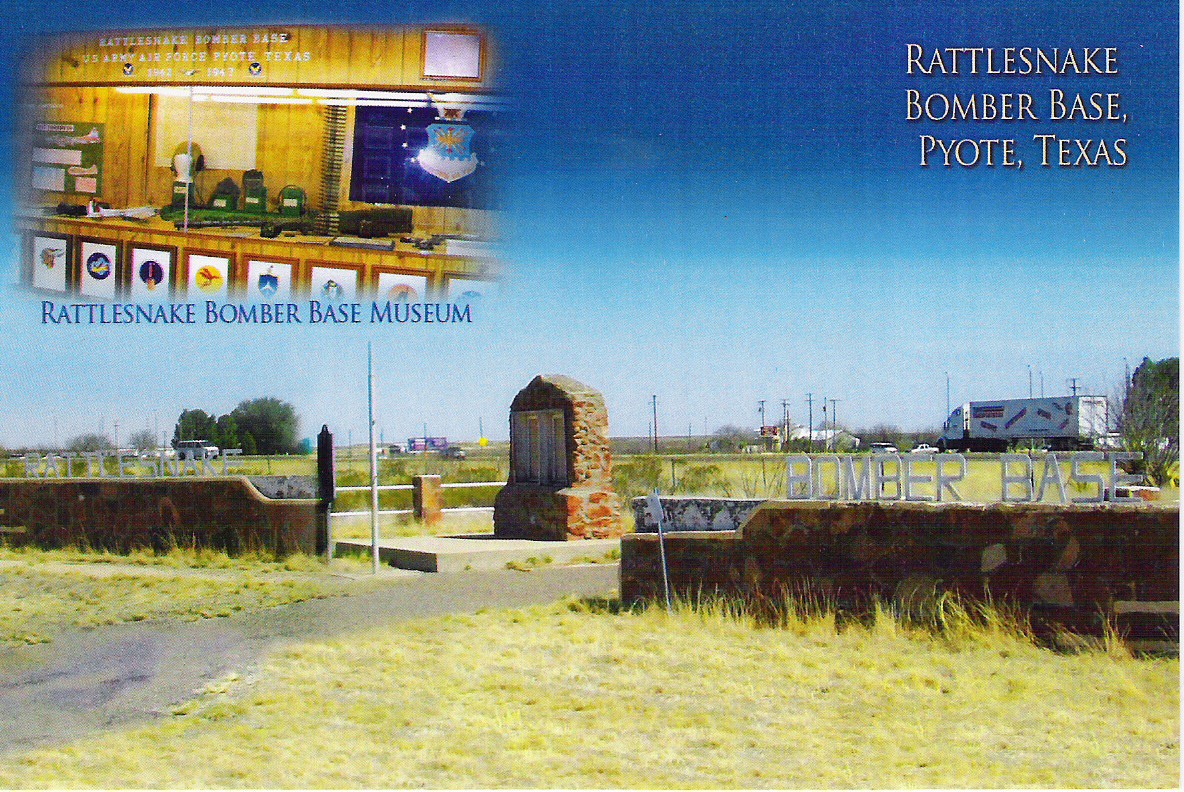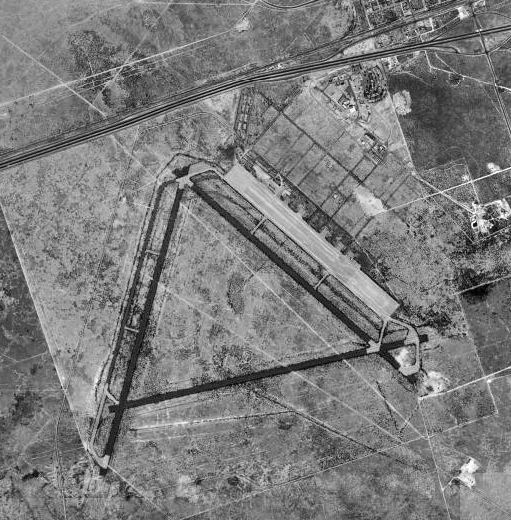
The Pyote Rattlesnake Bomber Base Museum is located at 1500 East Sealy.

History of the Pyote Rattlesnake Bomber Base
The flat, arid land near Monahans proved ideal for 8,400- foot-long runways used for World War II training flights of B-17 and B-29 bombers. That’s where the Army located the bomber-training base, Pyote Army Air Field (later Pyote Air Force Station). The terrain was prime habitat for rattlesnakes, leading to the base’s nickname "Rattlesnake Bomber Base." The noted 19th Bombardment Group, the first unit to bomb Japanese targets, flew to Pyote directly from combat in the Pacific. At war’s end, the base became an aircraft storage depot, holding some 2,000 warbirds. The Pyote Museum is located in a county park and exhibits Rattlesnake Bomber Base and local heritage artifacts.

Take a virtual tour of the Pyote Bomber Base Museum (Click Here)

Known for the unending flat terrain and continuous clear blue skies Pyote was selected from numerous West Texas towns to support a World War II training facility for bombers. The Army Airfield was located on 2745 acres of University of Texas land, one mile southwest of Pyote. Construction began at the end of 1942 and was completed nearly over night. The facility contained two giant runways, each over 1 ½ miles and an intersecting taxiway which formed a triangle. The base also included 5 large hangers, shops, warehouses, and living quarters. During the construction, the base earned the nick name "Rattlesnake Bomber Base" in recognition of the hundreds of infamous diamondback rattlesnakes found in the area.
Training programs started soon after New Years Day of 1943, rapidly turning out crews proficient in hitting targets from the B-17 Flying Fortress, and the B-29 Super Fortress. Time served at the base was bittersweet for the military men, as it was their last stop before they headed off to war…without a promise of a safe return. Thousands of men and women claimed Pyote as home, even if for just a short while. At the end of the war in 1945, most of the service men and women still stationed in Pyote were discharged or sent elsewhere. Immediately the base was turned into a storage depot for some 2000+ aircraft. A select few servicemen remained to tend to the base upkeep and aircraft storage responsibilities. After the Korean War, all the planes at Pyote were moved or scrapped, and most of the activity on the base ceased. In 1963, after several transformations from the original purpose, the base was closed for good.
Today, all that remains of the once busy populated base are the concrete walls of the main hanger. There are also some concrete vaults with armored doors still in place that were used to store the top-secret Norden bombsights between training missions. There are also numerous foundations scattered across the site. The runways and taxiway are all in fairly good condition with some native desert flora slowly taking over. The water tower with a beacon on top, the officer’s club swimming pool, and the main entrance built by German POWs all remain as well.